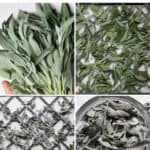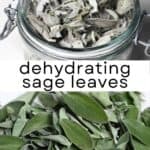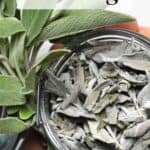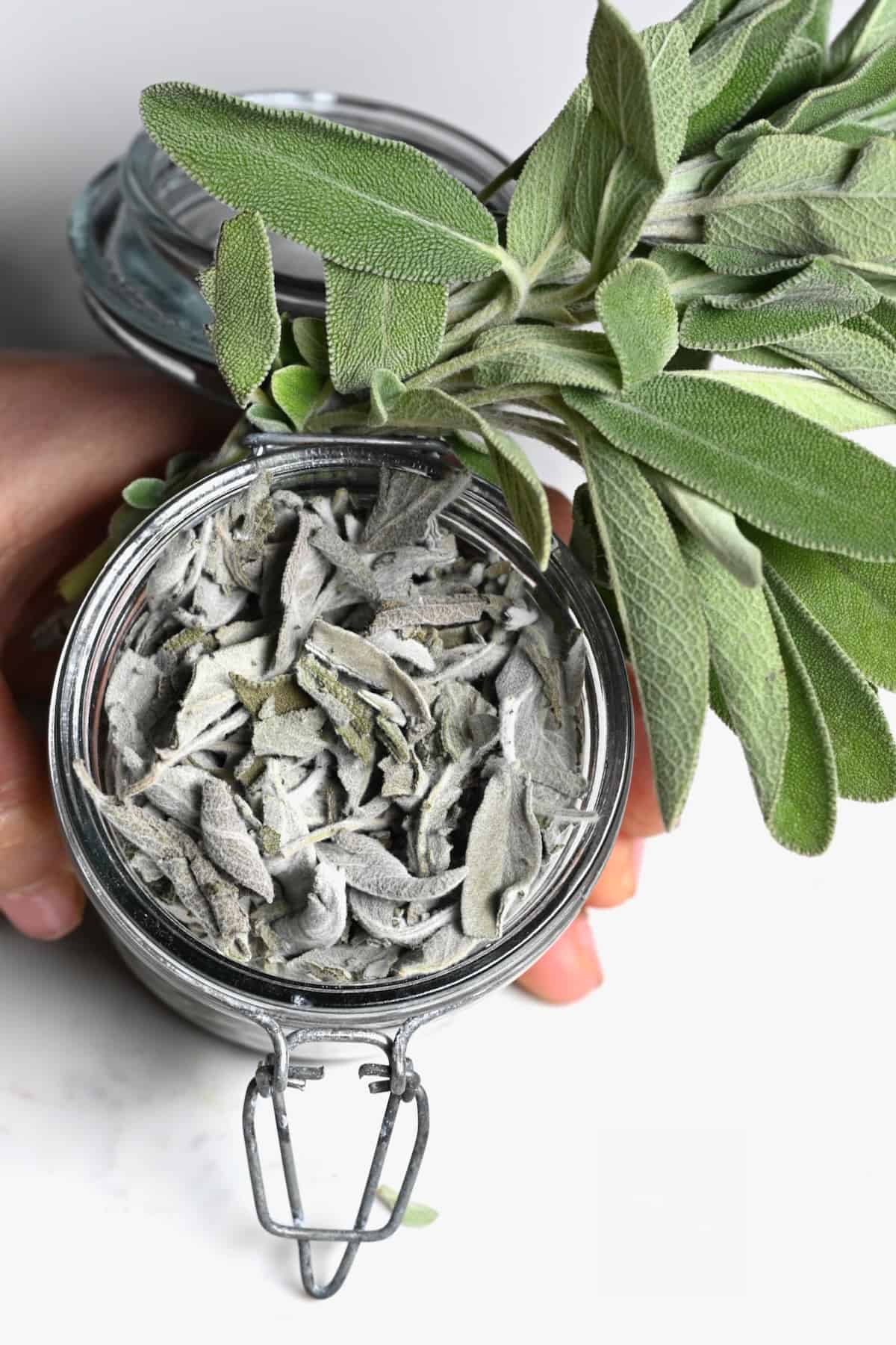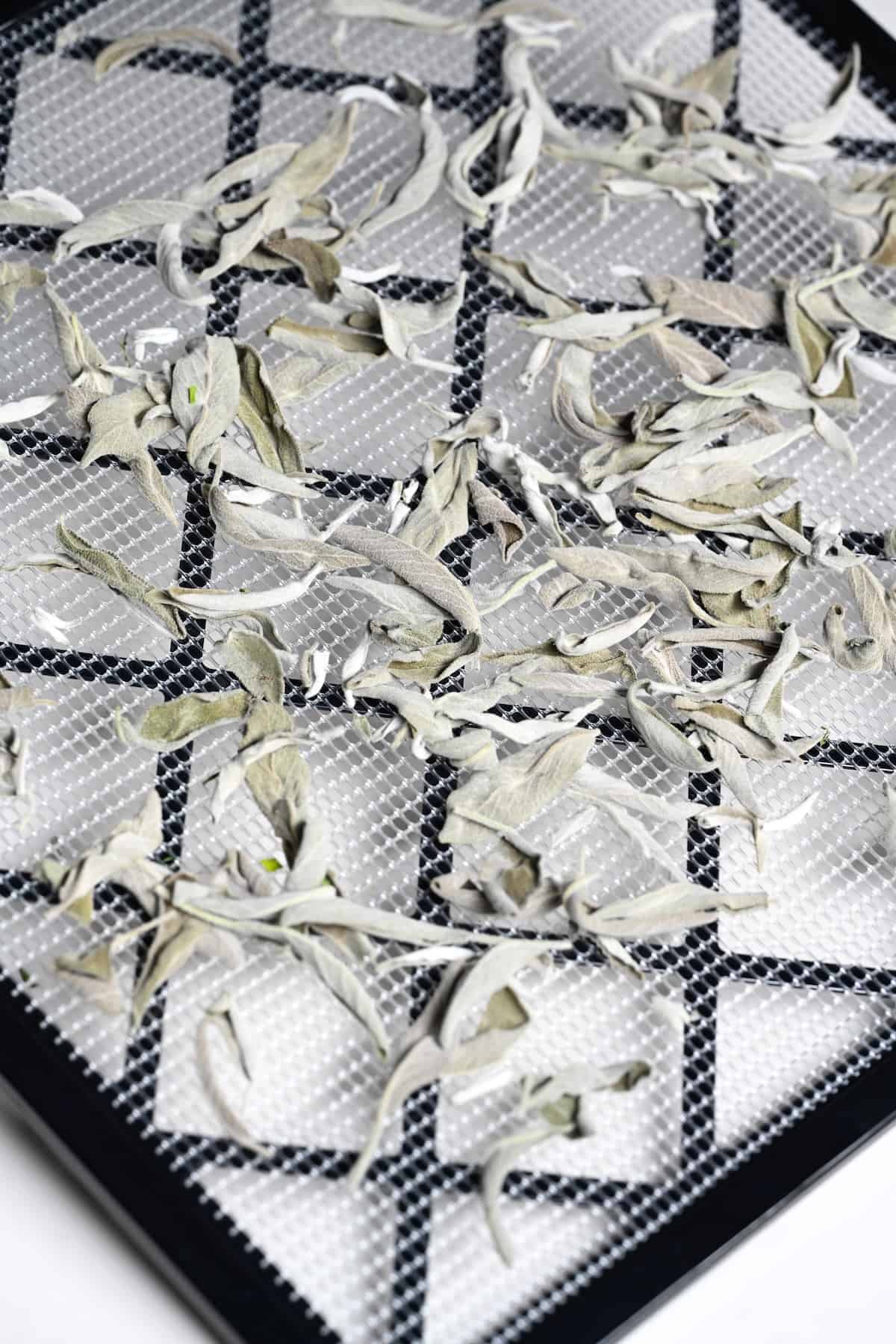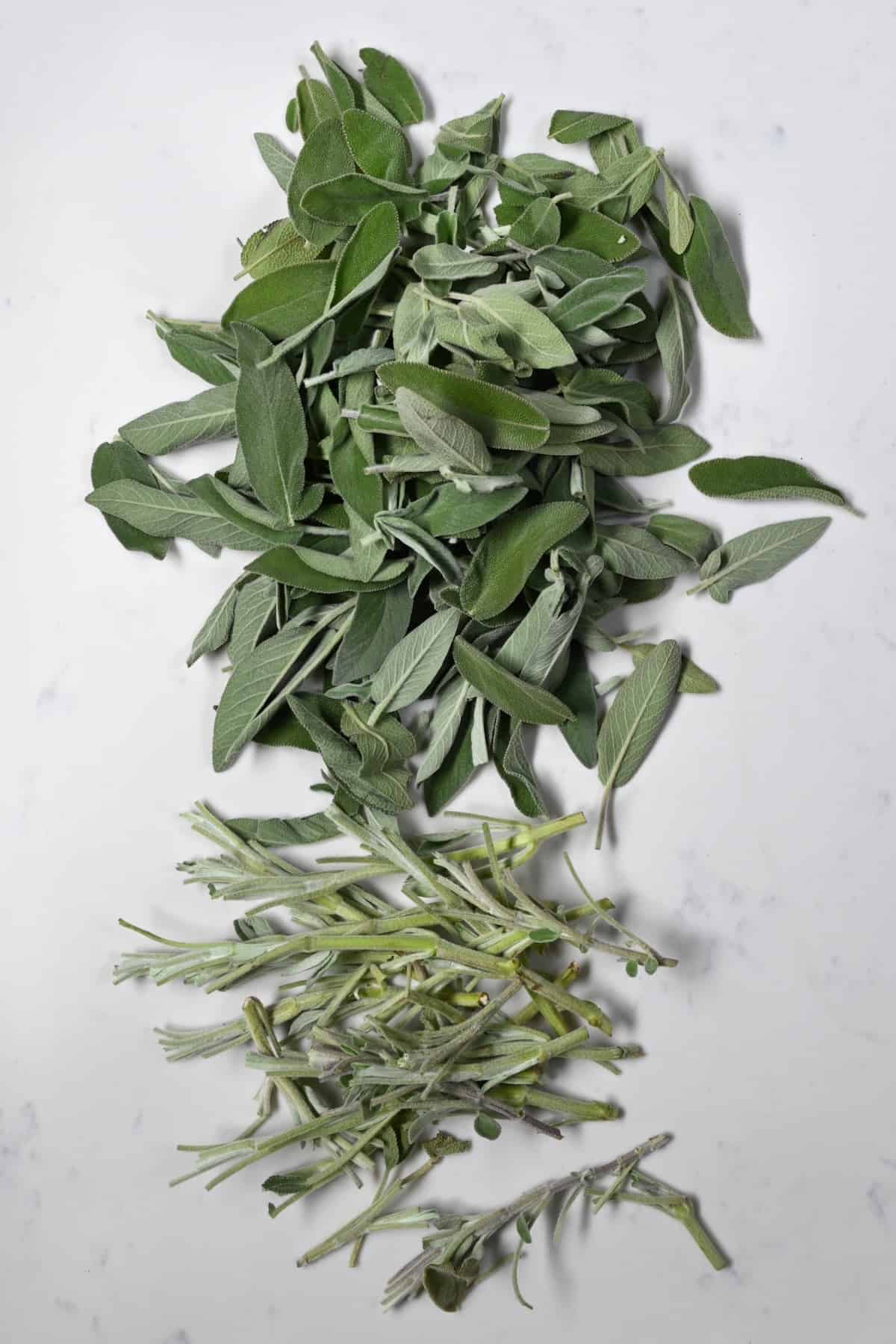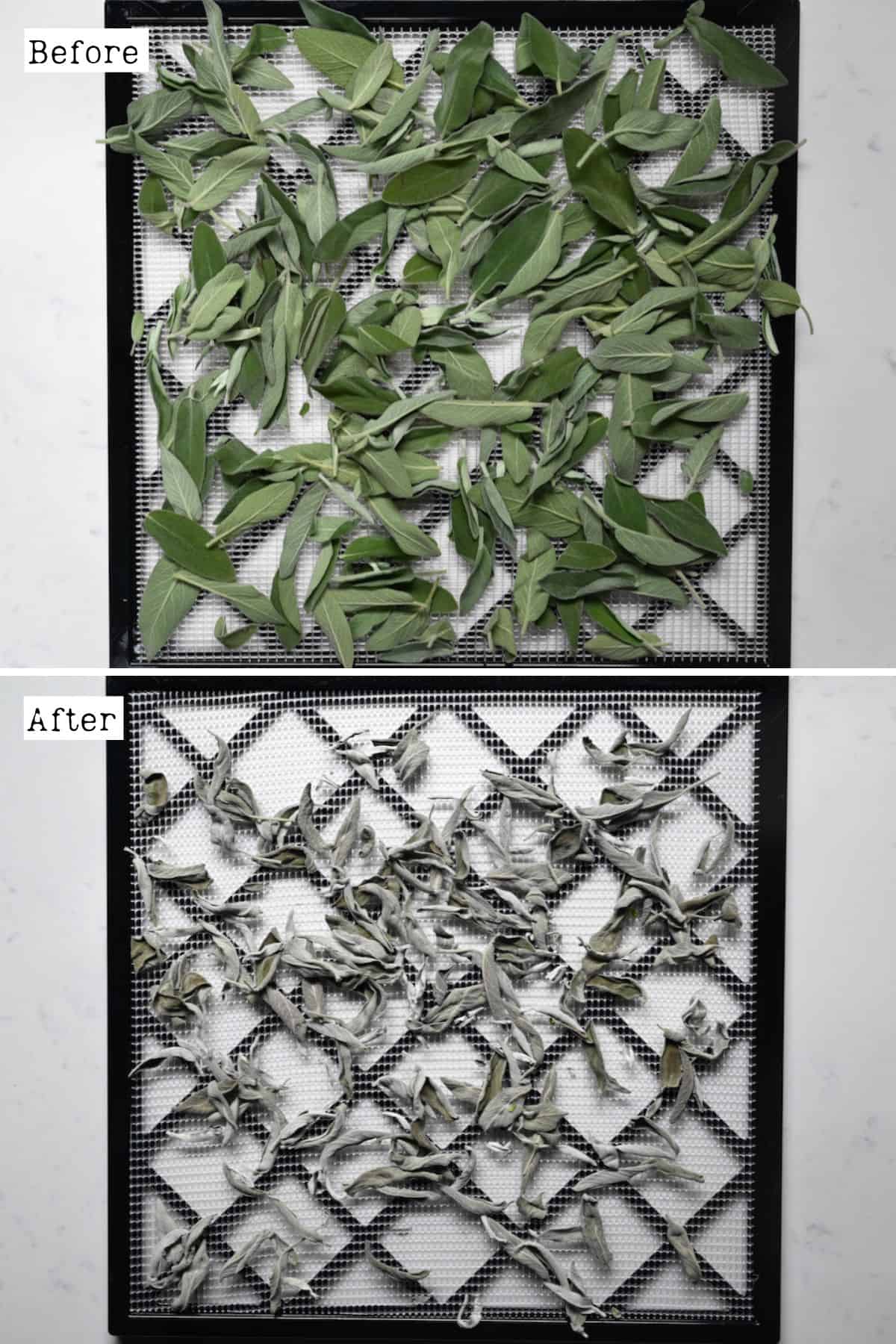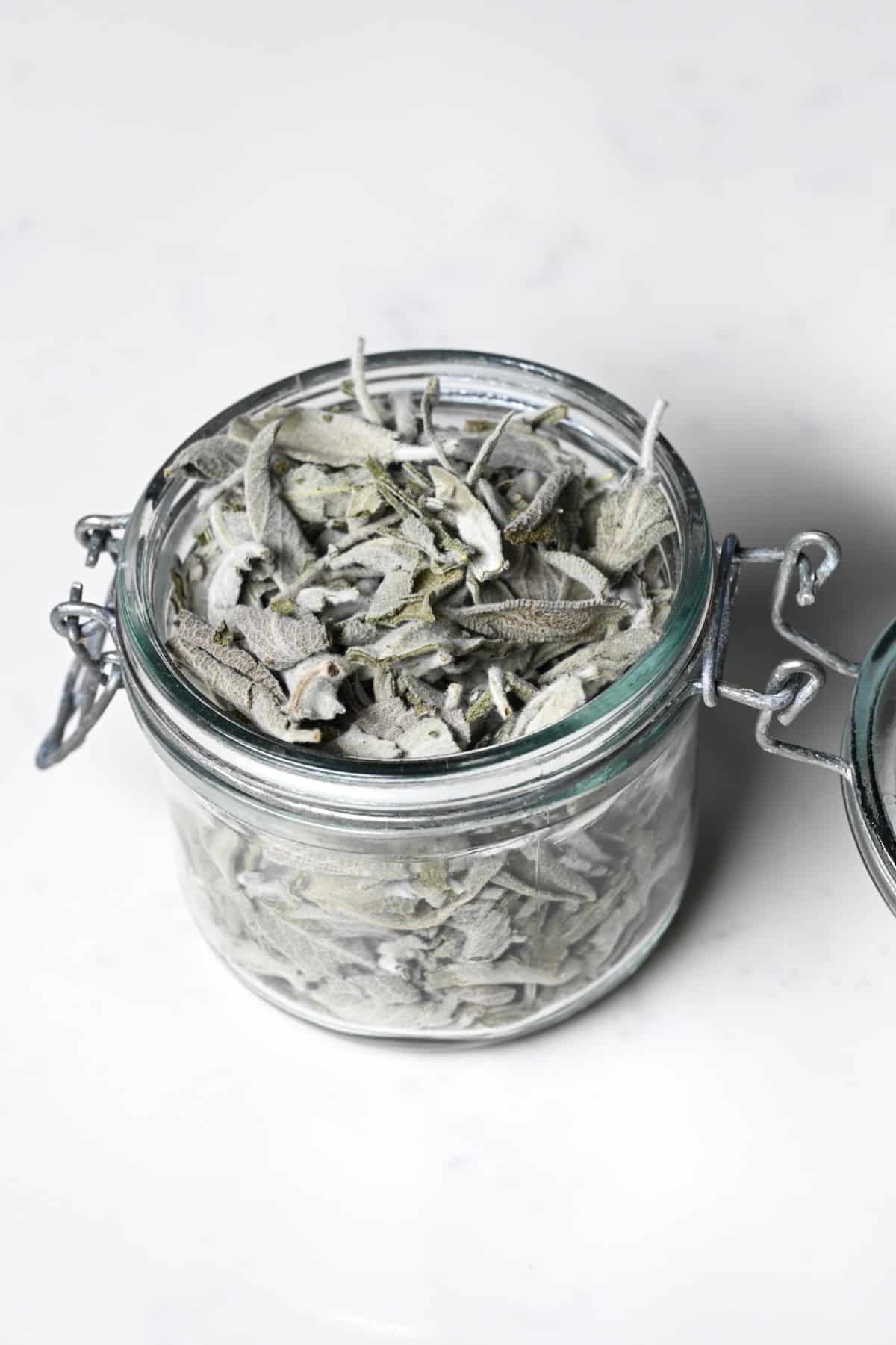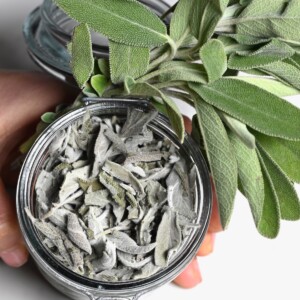Sage is a popular herb that’s part of the mint family alongside oregano, rosemary, thyme, and basil. It has a robust earthy flavor (with hints of citrus and pine) and can be used as fresh or dried sage leaves to boost dozens of dishes. However, drying sage can extend its shelf life and is a great way to deal with a surplus of the growing herb. You might also like to learn how to dry mint, thyme, parsley, or rosemary!
What Can You Use Dried Sage for?
Within meat rubs and marinades, For seasoning poultry, Seasoning for roasted vegetables – especially potatoes, butternut squash, & pumpkin, Stirred into mashed potatoes, Add to homemade stuffing, Add to tomato sauces, Use in soups and stews, Add to sausages, Bake into breads.
Dried sage is also popularly used to make a smudge stick for the spiritual practice of smudging. Even more impressive, though, they’re loaded with antioxidants and several beneficial plant compounds. These can lower the risk of certain cancers, lower “bad” cholesterol while raising “good” cholesterol, and improve brain function and memory. Several other reported benefits of sage include supporting oral health thanks to its antimicrobial effects, reducing blood sugar levels, and easing menopause symptoms. If you harvest directly from a sage plant, only remove about 1/3 of the mature leaves to allow the plant to recover & re-grow. Also, check for any insects/bugs, spider webs, or eggs. They’re ready when they’re dry and brittle enough to snap/crumble between your fingers (not bend). Allow a leaf to cool for several minutes before testing it. Some modern ovens have a dehydrating feature, allowing you to go as low as 95-100°F (35-38°C). In that case, there’s no need to prop the door open while drying the parsley in the oven. It helps to cover the bundles with a perforated paper bag to protect them from dust and in case any of the leaves drop. Generally, you’ll retain better color and flavor when dehydrating it indoors. However, the more important question might be when NOT to use dried sage. For example, when making a simple sauce for pasta/gnocchi & any time a recipe calls for frying the leaves in oil until crisp. If you try any of these methods for dehydrating sage, let me know how it goes in the comments below. I’d appreciate a recipe card rating and would love to see your recipe recreations – tag me on Instagram @Alphafoodie!
